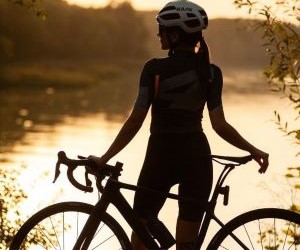Learn how to deal with punctures on long rides with prevention tips, repair techniques, and smart gear choices to keep rolling without stress.
HOW CAN HEAT AND LATE-SEASON FORM AT THE VUELTA CHANGE OUTRIGHT PRICING?
The Vuelta a España is unique among Grand Tours—not just for its routes and terrain, but for when it's held and the brutal Spanish heat that often defines it. These late-season conditions play a massive role in reshaping outright betting prices. This article unpacks how weather, rider fatigue, and form evolution in the second half of the cycling calendar affect market shifts and performance outcomes, offering practical strategies to anticipate and respond to pricing volatility in real-time.

How heat impacts rider performance and odds
Spain in August and September can be unforgiving. With temperatures often soaring above 35°C (95°F), the Vuelta a España introduces a physiological and tactical challenge that’s distinct from the Tour de France or Giro d’Italia. This climate dynamic doesn’t just affect riders—it affects bookmakers and punters, too.
Why heat skews performance expectations
Heat amplifies cardiovascular strain, increases sweat loss, and accelerates glycogen depletion—all of which can degrade performance, especially during summit finishes. Riders unacclimated to high temperatures tend to fade in week two, even if they started strong. Bookmakers respond fast: sudden time losses or heat-induced bonks lead to immediate odds adjustments.
Elite climbers like Tadej Pogačar or Jonas Vingegaard may have impressive GC records, but if their heat tolerance is suspect, their pre-race odds may not reflect late-stage vulnerability. Conversely, Spanish or South American riders often show enhanced endurance in heat, resulting in late surges that force repricing mid-race.
Extreme heat can cause time losses in unexpected GC contenders
Heat-adapted riders often outperform model projections
Bookmakers adjust odds stage-by-stage based on heat impact
Time trials and summit finishes under heat pressure amplify odds volatility
Hydration strategy and cooling tech can become competitive edges
For savvy bettors, watching for signs of heat acclimation—or lack thereof—can create valuable arbitrage or hedging opportunities as the GC battle unfolds.
How late-season form reshapes outright pricing
Unlike the Tour or Giro, the Vuelta’s late placement on the calendar (August–September) adds a unique variable: rider fatigue or resurgence. By this point, athletes have already raced a full season, and their form varies wildly—making pre-race betting far riskier and more reactive than in earlier Grand Tours.
From burnout to breakthrough
Some riders arrive at the Vuelta mentally and physically exhausted, using it as a tune-up for Worlds or simply to fulfill contract obligations. Others, especially young talents or those peaking late, treat it as a breakout stage. Bettors who study individual rider trajectories—not just season results—gain a crucial edge.
For example, Remco Evenepoel’s 2022 Vuelta win was preceded by a perfectly timed form peak. In contrast, Primož Roglič’s crashes and late-season fatigue led to inconsistent performances in prior editions, dramatically altering his mid-race odds.
Late-season riders with lower wear-and-tear often outperform favorites
U23 call-ups or support riders can emerge as dark horses
Strong Tour de France riders may fade at the Vuelta
Look for riders skipping other races to peak specifically for the Vuelta
Training camp intel and pre-race interviews offer predictive insights
Unlike early-season betting, Vuelta pricing is heavily influenced by real-time form updates, recovery status, and team roles. Punters should stay adaptive and use insider cues to stay ahead of market corrections.
Combining weather and form to predict odds shifts
Understanding heat and form individually is valuable—but combining them is where the sharpest predictions happen. Some riders excel when others melt. Others peak late when most are fading. This intersection is often where odds shift most aggressively during the Vuelta’s second week.
Weather-form overlays for smarter bets
Look for riders who thrive in both metrics. For instance, Colombian climbers often excel in heat and altitude. If they’ve raced a light calendar and are showing signs of form—like strong finishes in pre-Vuelta tune-ups—they’re likely to outperform longer-odds expectations.
Pay attention to weather forecasts for key summit stages. A predicted 38°C day with crosswinds on Sierra Nevada could completely shake up GC expectations. Similarly, riders who falter in week two in previous Grand Tours are red flags if the heat spikes late.
Track performance in hot-weather lead-up races (e.g., Tour of Burgos)
Monitor rider heat adaptation statements during rest-day interviews
Overlay rider fatigue levels with stage-specific weather patterns
Follow team strategy changes—protected rider status may shift mid-race
Use live betting during summit stages for value in swing moments
Successful Vuelta betting requires more than just studying stats—it demands reading context. When heat and timing align, big market inefficiencies appear. That’s when informed punters cash in.
YOU MAY ALSO BE INTERESTED






